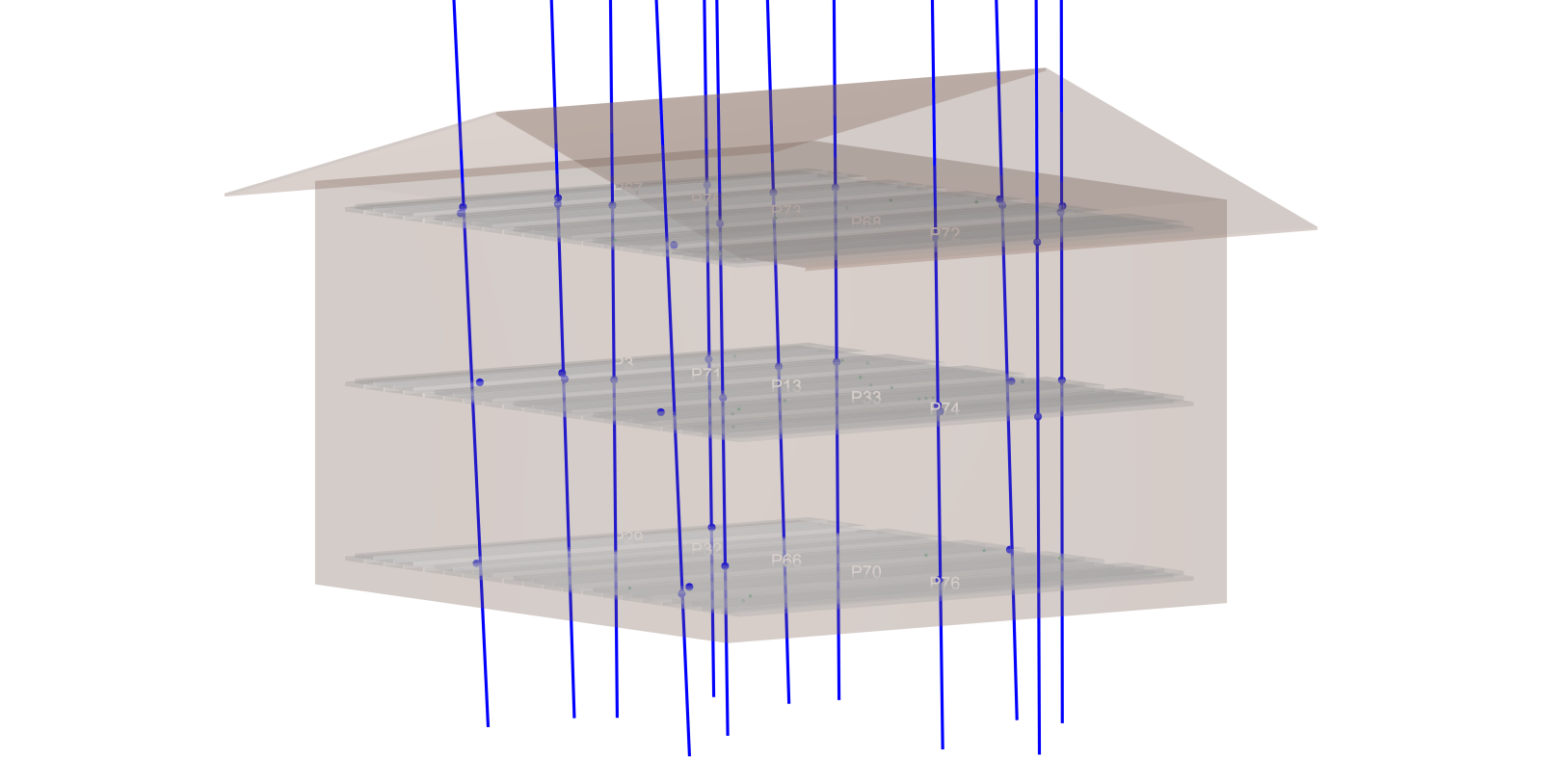EMMA - An Underground Cosmic Ray Experiment
EMMA (Experiment with MultiMuon Array) aims to study the composition of cosmic
rays around the knee region. It is an underground experiment situating 75
metres underground at the Pyhäsalmi Mine, Pyhäjärvi, Finland.
The 75 metres overburden (corresponding to 240 m.w.e.) produces an energy
cut-off of approximately 45 GeV for vertical muons.
The array is capable of measuring the multiplicity and the lateral distribution
of underground muons, and arrival direction of the air shower with an accurace
better than 1 degree. The array consists of nine detector stations of an area of
15 square meters each (see Fig. 1) Three of the stations (C, F, G) are so called
tracking stations with three layers of position sensitive drift chambers.
In the rest of the stations there are one layer of similar drift chambers. In
addition, the tracking stations will also be filled with small-size plastic
scintillation detectors.
The drift chambers are the former muon barrel detectors (MUB) of the DELPHI
experiment at CERN. The scintillation detectors are designed especially for
the EMMA experiment to improve the multiplicity measurement. They are
manufactured by RAS/INR, Moscow.

Figure 1. Schematic layout (top view) of the array. It consist of
nine detector stations (called A, ..., I), from which three (shown by
green) are so called tracking stations with are three layers of
drift chambers and one layers of small-size plastic scintillation
detectors. One-layer stations (shown by red) occupy one layer of
drift chambers. Detector stations from A to E have been finished and
are taking data (situation at July 2010).
Due to the energy cut-off of approximately 45 GeV, only high-energy muons of
an air shower are detected (the low-energy ones being filtered out by the
rock overburden). Since these high-energy muons are created in the upper
part of an air shower close(r) to the primary collision, the experiment
is also sensitive to the interactions in the upper part and not disturbed
by more numerous low-energy particles. This is expected to suppress the
uncertainty in the reconstruction of the primary cosmic-ray particle.

Figure 2. A photograph from the cavern at the depth of 75 metres. At the
front is station B and at the back station C.
Figure 2 shows a photograph from the underground location.

Figure 3. An example of particle tracks detected by the first tracking
unit (station C in Fig. 1).
Approximately two months have now been measured with the first tracking unit. This
is still mainly for testing purposes. As an example, a set of 12 identified particle
tracks is shown in Fig. 3.
One scientific aim is also the confirmation of the high muon-multiplicity
measurements performed at LEP. With the full array an information of the
composition is obtained which may give some more information about the
origin of the muon bundles.
Collaboration
University of Oulu, Finland:
University of Jyväskylä, Finland:
Russian Academy of Sciences, Moscow, Russia:
University of Aarhus, Denmark:
References
Last modified: Monday, July 5, 2010 by Timo


